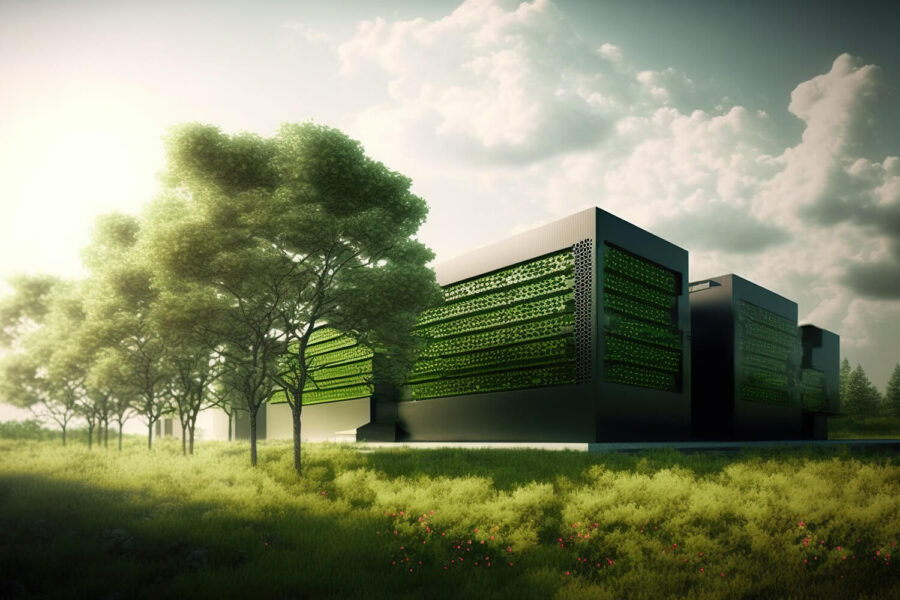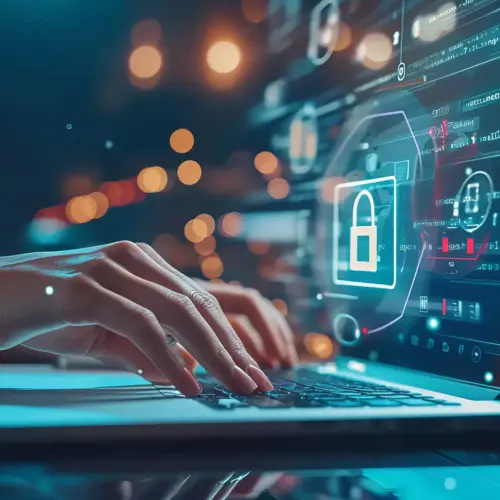Data centers are coming under increasing scrutiny by the media and regulators for their energy use. While data centers currently use 1% of the world’s electricity, analysts forecast that consumption will grow to 8% by 2030. Among the reasons why: Enterprises are digitizing business models, digital services like augmented and virtual reality require more processing power, and consumers have an ongoing love affair with streaming services. One bit of good news is that cryptocurrency mining, a notorious energy hog, is falling in popularity as rising power costs make this practice unprofitable.
Understanding Energy Sustainability Terminology
Energy sustainability terminology can be confusing. Here’s a cheat sheet for common terms:
- Carbon dioxide (Co2) emissions: The emissions that result from fossil fuel consumption or cement manufacturing. According to Eurostat, they include emissions produced during the burning of solid, liquid, and gas fuels, as well as gas flaring.
- Greenhouse gas emissions: Emissions from a group of seven different fluorinated and non-fluorinated gasses that contribute to global warming and climate change. Co2 and methane are non-fluorinated gasses.
- Carbon footprint: Total greenhouse gas emissions created by individuals, organizations, events, services, places, and products. Measuring an organization’s carbon footprint is determined by determining greenhouse emissions generated by the organization (Scope 1) and its upstream (Scope 2) and downstream activities (Scope 3).
This scoping system was developed by the Greenhouse Gas Protocol so that organizations could track and quantify emissions, enabling them to baseline total emissions and work towards reducing them. This challenging process has been made easier with digital platforms that help calculate carbon footprints. - Carbon-neutral: The process of offsetting greenhouse gas emissions. Includes such activities as avoiding emissions or purchasing carbon offsets.
- Net-zero: Removing the same amount of greenhouse gasses in the earth’s atmosphere as those created by human and organizational activity.
- Climate-positive: Moving beyond net-zero emissions and removing additional Co2 from the atmosphere.
- Sustainable energy: Using clean, renewable energy sources that have little or no negative impact on the environment.
- Energy sustainability: Ensuring the availability of adequate, reliable, affordable energy sources in conformance with social and environmental requirements.
In addition, regulations are coming that will tax energy-inefficient data centers.
The European Union (EU) has called for data centers to become carbon-neutral by 2030. The EU is also drafting a Green Deal, to reduce net greenhouse gas emissions across the data center industry by at least 55% by 2030. The specter of forthcoming legislation has propelled European data center operators to move ahead of mandates. In 2021, European data center operators and other organizations signed the Climate Neutral Data Centre Pact, committing to becoming climate-neutral by 2030. The group, now up to 100 data center operators and trade associations, promise to purchase 100% carbon-free energy, prioritize water consumption, reuse and repair servers, prove energy efficiency with measurable targets, and look for ways to recycle heat.
In the U.S., the Energy Act of 2020 called for industry collaboration on energy efficiency research and best practices. Such activity is often an indicator of future regulation to come.
As a result, data center owners and operators are seeking to future-proof their business models and operations by achieving energy sustainability ahead of regulatory mandates. That means ensuring that they have long-term access to energy sources that meet business, social, regulatory, and environmental requirements.
There’s No Single Strategy to Achieve Energy Sustainability
Obviously, achieving energy sustainability is an ongoing process, and there’s no one-size-fits-all strategy for data center owners and operators to follow. The path that industry organizations take will depend upon multiple factors, including their location, capital, access to energy sources, regulatory regime, and more. Well-funded hyperscalers and colocation firms obviously have access to different technologies and processes than their smaller peers.
Here are some different short and long-term strategies that data center operators and enterprises can use to achieve energy sustainability.
- Calculate energy consumption: It’s difficult for organizations to improve energy sustainability if teams don’t fully understand current consumption, waste, and opportunities for improvement. Data center infrastructure management (DCIM) solutions enable teams to gain total visibility into their power chain, monitor device power use, and obtain access to data they can use to plan improvements.
- Adopt cloud infrastructure and services: Enterprises that go cloud-first can shift most of their carbon emissions to partners. Instead of producing Scope 1 emissions, they consume services that are covered by Scope 3 emissions. In addition, hyperscalers are incredibly energy-efficient. As an example, Google has a power usage effectiveness (PUE) score of 1.1 at all of its large data centers, while Microsoft has a PUE score of 1.12 at its newer facilities. Reducing carbon emissions is just one of many reasons enterprises are increasing their use of cloud infrastructure and other services or even exiting the data center business entirely.
Read our blog, Maximize Data Center Energy Efficiency By Calculating and Improving Power Usage Effectiveness (PUE)
- Use more efficient hardware and equipment: In our blog on improving PUE, we highlight some strategies, such as virtualizing technologies, decommissioning zombie servers, and improving power management and distribution can help data centers improve energy efficiency and reduce their PUE scores. Virtualizing technology, such as servers, storage, and more can lead to energy reductions of 3% to 90% depending on the scope of deployments, computational methods used to determine energy usage, and whether machine learning is applied. As covered in our PUE blog, virtualizing technology increases the power density of racks, necessitating new power and cooling improvements as well.
- Improve cooling strategies: Data center cooling is undergoing a renaissance. Operators now have multiple options to choose amongst, including direct-to-chip, two-phase immersion, geothermal, microchannel liquid, microconvective, and calibrated vector cooling. Selecting the right cooling technology can be challenging, and new investments are costly. Partners can support operators by matching cooling technologies to organizations’ business goals and site and technical requirements. Liquid cooling is increasingly popular, as it is more efficient and cost-effective than air cooling for cooling the high-density racks used for processing-intensive workloads.
Adopting More Renewable Energy
Renewable energy by its very nature is sustainable. Energy sources such as wind, solar, hydroelectric, geothermal energy, and more can be continuously generated and replenished and have low carbon emissions. Using renewable energy could help drive cost savings if deployed by data centers at scale.
Currently, renewable energy sources aren’t predictable enough for data centers, which have always-on processes and are governed by rigorous service-level agreements (SLAs) for high availability. According to Vertiv, “fluctuations and dropouts [of power] as short as 30 milliseconds can harm IT equipment and trigger outages.”
There are a couple of ways to use more renewables and transition away from fossil fuels, while still protecting always-on digital operations.
- Use renewable energy sources with hydrogen fuel cells: When renewables aren’t fully available, fuel cells produce hydrogen and use it to power data center technology. This is an emerging approach that hyperscalers are exploring. Microsoft recently tested a hydrogen fuel cell system to deliver backup power and envisions that it will replace backup diesel generators. Amazon and IBM are among other companies investigating this technology.
- Deploy energy storage technologies: Recent innovations, such as the mass-commercialization of long-life lithium-ion batteries, have made the prospect of capturing and storing energy at scale possible for more organizations. Energy storage options include lithium-ion-powered battery energy storage systems (BESSs) that capture renewable energy for future use and provide an always-on, always-available source of backup power. When paired with an energy management system (EMS), BESSs enable organizations to use a wider range of renewable energy sources, choose the right energy source for the job at hand, and participate in microgrid services. That means that organizations have control over which energy source they use and when, enabling them to achieve performance, cost, and sustainability goals.
Other options include flywheel energy storage systems, which store kinetic energy and provide several hours of backup power and no performance degradation, meaning they can be cycled on an unlimited basis. Flywheel systems aren’t a form of renewable energy, but have low carbon emissions, making them attractive as backup power sources. However, these systems have short discharge times, can be prone to mechanical stress, and have potentially hazardous failure modes.
In addition, thermal energy storage enables excess thermal energy to be captured, stored, and used in the future. Technologies include sensible heat storage, which increases or decreases the temperature of a medium in a storage receptacle; and latent heat storage, on the other hand, which uses a phase change of a material to store heat. These strategies may be more cumbersome than using a self-contained BESS or network of BESSs on a data center campus.
Being able to store energy enables organizations to use more renewables, increase energy efficiency, and improve business continuity and resilience.
Deploying Other Innovative Strategies
After calculating PUE data, improving equipment, and using renewables, teams still aren’t done. Here are some other innovative strategies to put to work:
- Strategically locate facilities: Hyperscalers may choose to locate new facilities close to sources of renewable energy, such as wind, hydroelectric, or solar power. They can then integrate these abundant sources of renewable energy into their overall energy mix.
- Recover and reuse heat: Data center technologies throw off an incredible amount of heat, which is typically released into the air, where it is then cooled and reused. However, if recovered by heat pumps and transferred by heat exchangers, hot air can be used for other purposes, such as heating nearby buildings. One challenge is that the heat produced is low temperature and communities must have district heating systems to accept data center waste heat. However, data center waste heat is produced via electricity, whereas buildings are powered by gas. Thus, communities have an incentive to accept waste heat, because they can use it to decarbonize their heating operations.
- Use advanced technology to optimize energy usage: Data center operators are using artificial intelligence (AI) and machine learning (ML) algorithms, for multiple purposes, including increasing energy efficiency. According to Equinix, AI/ML models enable data center teams to proactively manage PUE; assess the impact of manual changes to asset parameters; identify the best operating parameters to achieve desired asset results; and predict and optimize water usage effectiveness (WUE), which is the ratio of annual site water usage and energy consumed by IT equipment. This process helps teams reduce energy consumption and costs.
“With pragmatic use of AI, companies can save up to 40% of the power spent on data center cooling – E&Y.”
Improve Energy Sustainability Starting Today
There are so many different options for achieving energy sustainability that it can be difficult to know how to craft the best strategy and balance short- and long-term imperatives.
One of the best places to start is by analyzing data for opportunities. DCIM solutions provide data center teams with a complete view of the power chain, so that they can spot energy waste and prioritize improvements. By delivering short-term gains, such as by adopting more cloud services, virtualizing technology, and replacing power equipment, teams can deliver ROI that business stakeholders value. By doing so, they can gain leader support and stakeholder will for undertaking long-term strategies and transforming their data center business to become energy efficient, achieve energy sustainability goals, and future-proof the business model.




